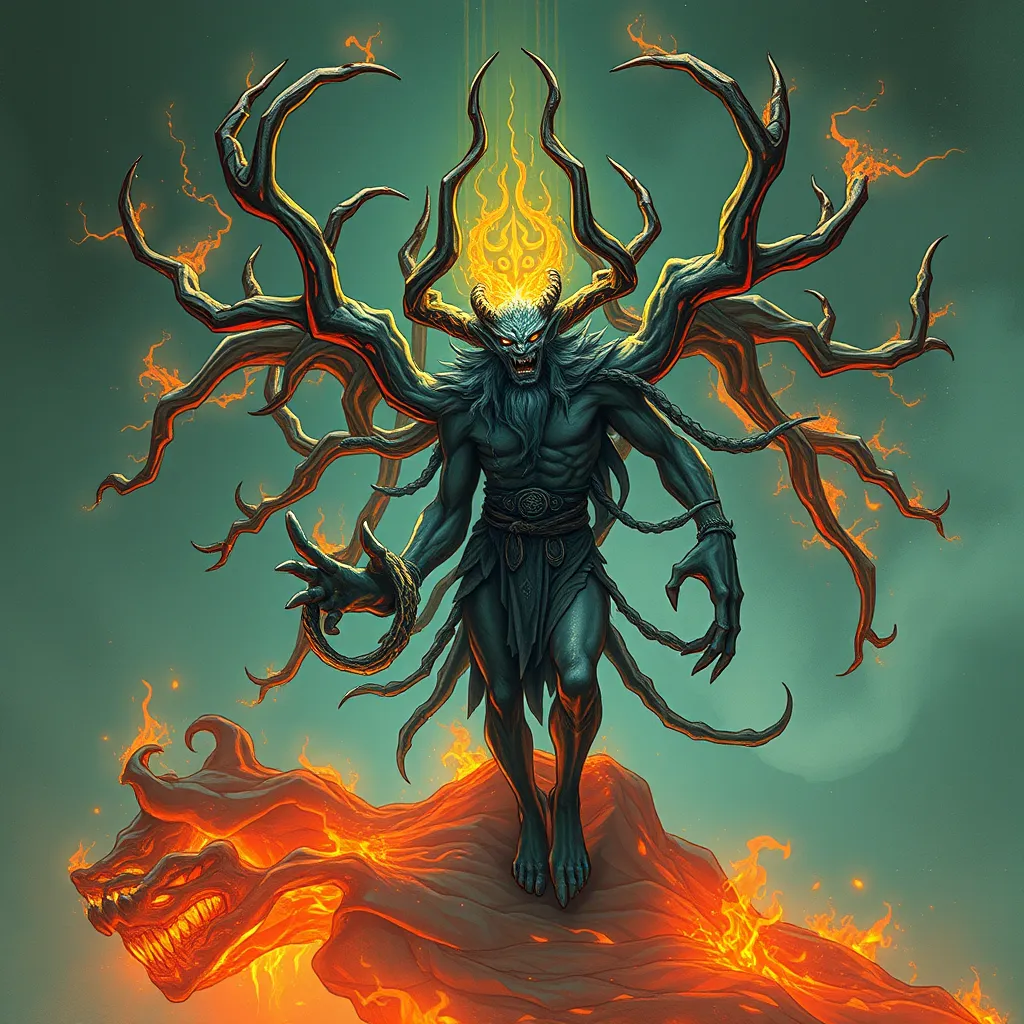The Giant of the Outback: An Australian Aboriginal Legend of the Bunyip
I. Introduction
The Bunyip is one of the most intriguing and enduring legends in Australian Aboriginal culture. This mythical creature has captured the imagination of both Indigenous Australians and non-Indigenous people alike, serving as a powerful symbol of the mysteries of the Australian landscape. In this article, we will delve into the origins, characteristics, and significance of the Bunyip in Aboriginal culture, as well as its evolution and representation in modern Australian society.
Understanding the Bunyip goes beyond mere folklore; it encapsulates the deep connection between Aboriginal people and their land, highlighting how stories are woven into the fabric of cultural identity. The purpose of this article is to explore the multifaceted nature of the Bunyip legend and its relevance both historically and in contemporary contexts.
II. Origins of the Bunyip Legend
A. Historical context and early Aboriginal stories
The Bunyip legend dates back thousands of years, with roots in the oral traditions of various Aboriginal tribes across Australia. Early accounts of the Bunyip describe it as a creature inhabiting swamps, creeks, and waterholes, often associated with danger and caution.
B. Regional variations of the Bunyip myth
Different Aboriginal groups have their own interpretations of the Bunyip, reflecting the diverse environments and experiences of these communities. For example:
- In some regions, the Bunyip is depicted as a large, aquatic creature resembling a seal.
- Others describe it as a monstrous dog-like beast, while some portray it with features resembling a crocodile.
- In certain tales, the Bunyip is said to have a long neck and a distinctive call that echoes through the night.
C. The role of oral tradition in preserving the legend
Oral tradition plays a crucial role in the preservation of the Bunyip legend. Elders pass down stories through generations, ensuring that the knowledge and cultural significance associated with the Bunyip are maintained. This method of storytelling reinforces the collective memory of Aboriginal communities and strengthens their connection to the land and its myths.
III. Descriptions and Characteristics of the Bunyip
A. Physical appearances in different accounts
The physical description of the Bunyip varies widely among different Aboriginal tribes. Common characteristics include:
- Large, hulking body
- Hairy or fur-covered skin
- Sharp claws and teeth
- Eyes that glow in the dark
B. Behavioral traits and habitat
The Bunyip is typically depicted as a nocturnal creature, lurking in the shadows of wetlands and riverbanks. Its behavior is often associated with cunning and ferocity, making it a fearsome figure in Aboriginal folklore. It is said to be protective of its territory, often preying on unsuspecting travelers or livestock.
C. Symbolism of the Bunyip in Aboriginal spirituality
The Bunyip holds significant symbolic meaning in Aboriginal spirituality. It embodies the spiritual connection to water, signifying both the nurturing and destructive forces of nature. The Bunyip’s presence in stories serves as a reminder of the respect and caution that must be exercised in the natural world.
IV. The Bunyip in Aboriginal Society
A. The Bunyip’s role as a cautionary figure
As a cautionary figure, the Bunyip is often invoked in stories told to children. These tales serve to educate younger generations about the dangers of wandering too close to waterholes or engaging in reckless behavior. The Bunyip acts as a moral guardian, reinforcing community values.
B. Impact on daily life and cultural practices
The fear of the Bunyip has influenced various cultural practices, including:
- Rituals to appease the Bunyip before fishing or hunting near water bodies.
- Song and dance performances that recount Bunyip stories, preserving cultural heritage.
C. Stories and rituals surrounding the Bunyip
Many Aboriginal tribes have specific stories and rituals associated with the Bunyip. These narratives often explore themes of heroism, caution, and respect for nature. Through storytelling, the significance of the Bunyip is reinforced within the community.
V. The Bunyip in Modern Australian Culture
A. Evolution of the Bunyip legend in contemporary society
As Australia modernized, the Bunyip legend evolved, adapting to contemporary cultural contexts. The Bunyip has transformed from a local folklore figure into a symbol of Australian heritage that resonates with diverse audiences today.
B. Representation in literature, art, and media
The Bunyip has been depicted in various forms of literature, art, and media. Notable representations include:
- Children’s books featuring the Bunyip as a friendly character.
- Artwork inspired by the creature, showcasing its mythical qualities.
- Documentaries exploring Aboriginal legends, including the Bunyip.
C. The Bunyip as a tourist attraction and cultural icon
Today, the Bunyip serves as a tourist attraction, with numerous locations across Australia celebrating its legend. Statues, festivals, and themed events highlight the cultural significance of the Bunyip, drawing interest from both locals and visitors.
VI. Scientific Perspectives on the Bunyip
A. Theories about the origins of the Bunyip myth
Several theories attempt to explain the origins of the Bunyip myth from a scientific perspective. Some suggest that the legend may have been inspired by the discovery of fossils of extinct megafauna, such as the Diprotodon, which could have resembled the creature described in Aboriginal stories.
B. Possible real-life inspirations (e.g., extinct animals)
Research has proposed that the Bunyip could be based on sightings of real animals, such as:
- Large, unusual seals or crocodiles.
- Extinct marsupials that roamed the Australian landscape.
C. The intersection of science and folklore
The intersection of science and folklore presents a fascinating area of study, illustrating how cultural narratives can arise from natural phenomena. The Bunyip legend exemplifies how humans interpret and give meaning to their environment.
VII. The Enduring Legacy of the Bunyip
A. The Bunyip as a symbol of Australian identity
The Bunyip has become a symbol of Australian identity, representing the unique blend of Indigenous heritage and contemporary culture. It serves as a reminder of the rich tapestry of stories that define Australia’s history.
B. Preservation of Aboriginal myths in modern storytelling
In modern storytelling, the preservation of Aboriginal myths like that of the Bunyip is crucial. These narratives continue to inspire artists, writers, and educators, ensuring that the cultural significance of these stories endures in the collective consciousness.
C. Future of the Bunyip legend in Australian culture
The future of the Bunyip legend is bright, as ongoing interest in Aboriginal culture fosters a greater appreciation for its stories. As communities work to revitalize and share their heritage, the Bunyip will likely remain a cherished symbol of Australia’s rich folklore.
VIII. Conclusion
In conclusion, the Bunyip is more than just a mythical creature; it is a vital part of Aboriginal culture and identity. The legend of the Bunyip highlights the importance of folklore in understanding and respecting the cultural narratives that shape our world. As we reflect on the significance of stories like the Bunyip, we are encouraged to explore and honor the rich traditions of Aboriginal people, fostering a deeper connection to the land and its mysteries.



